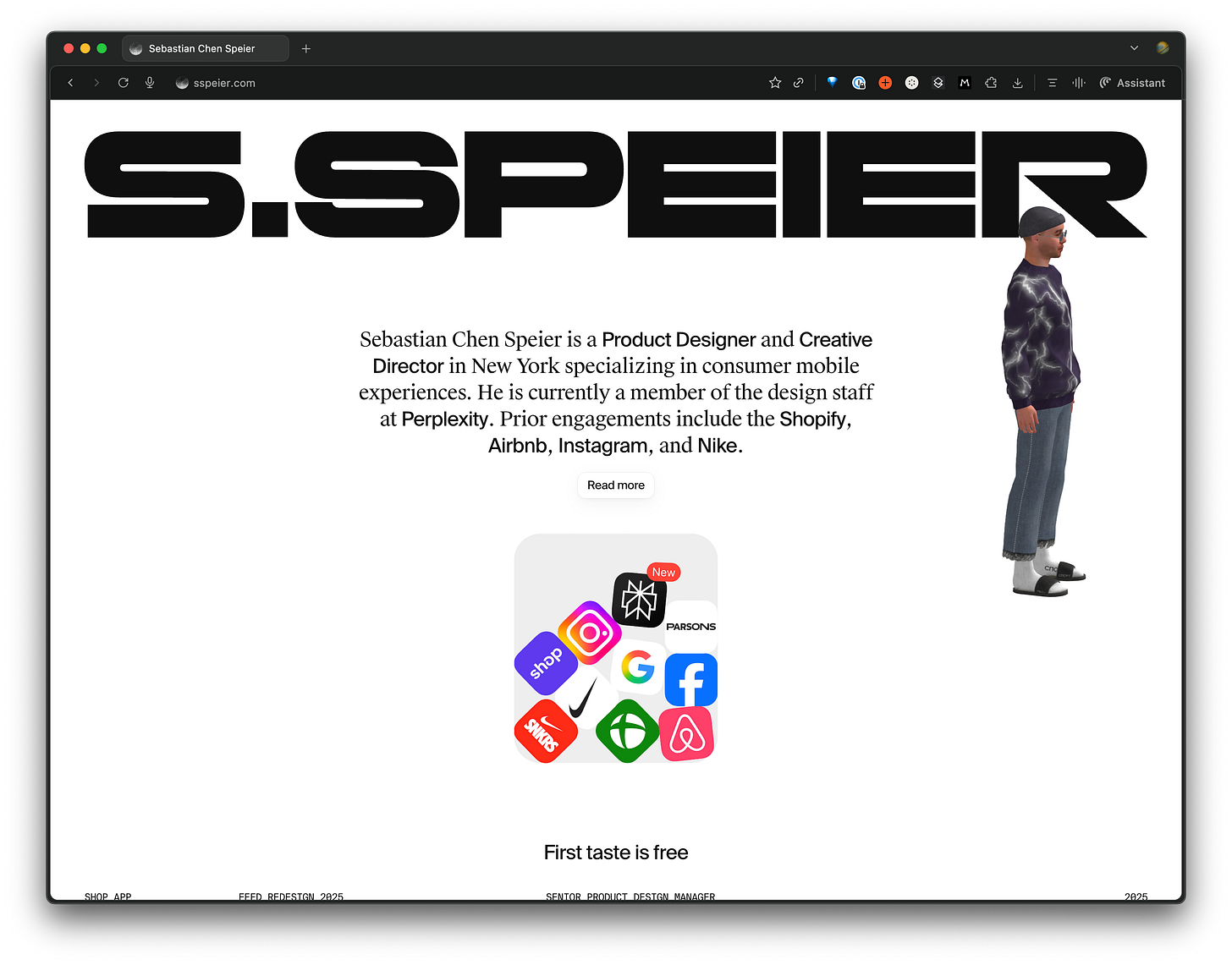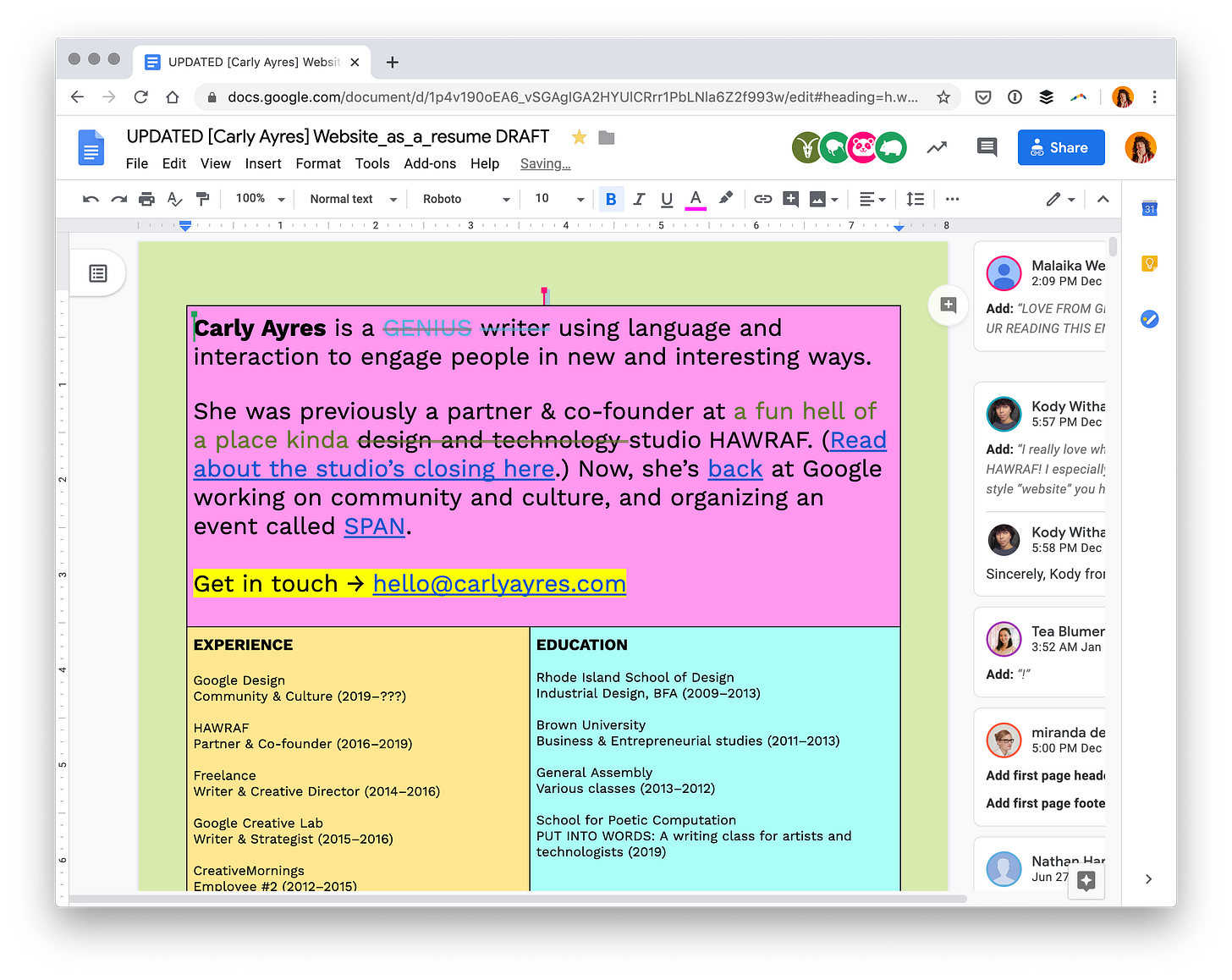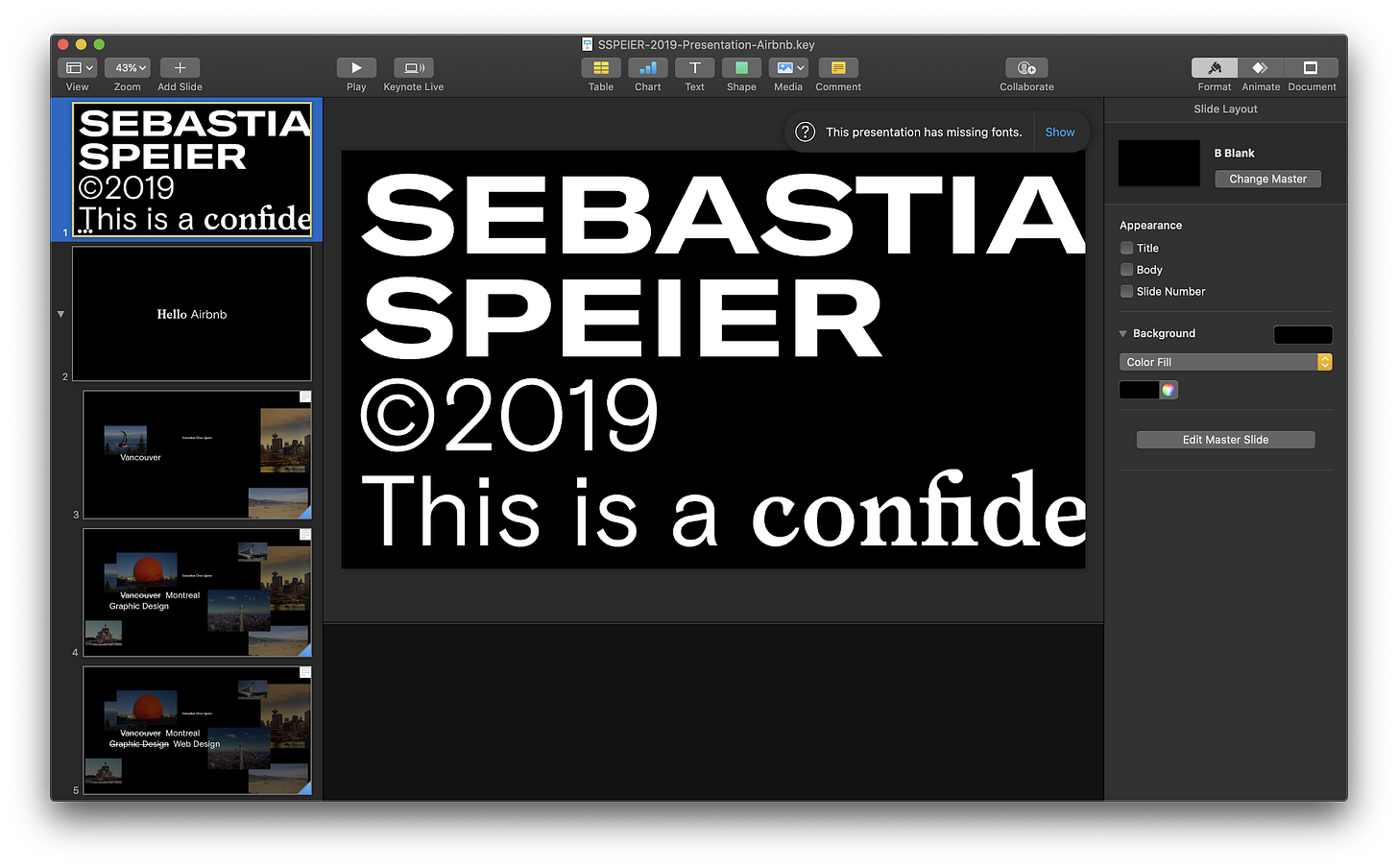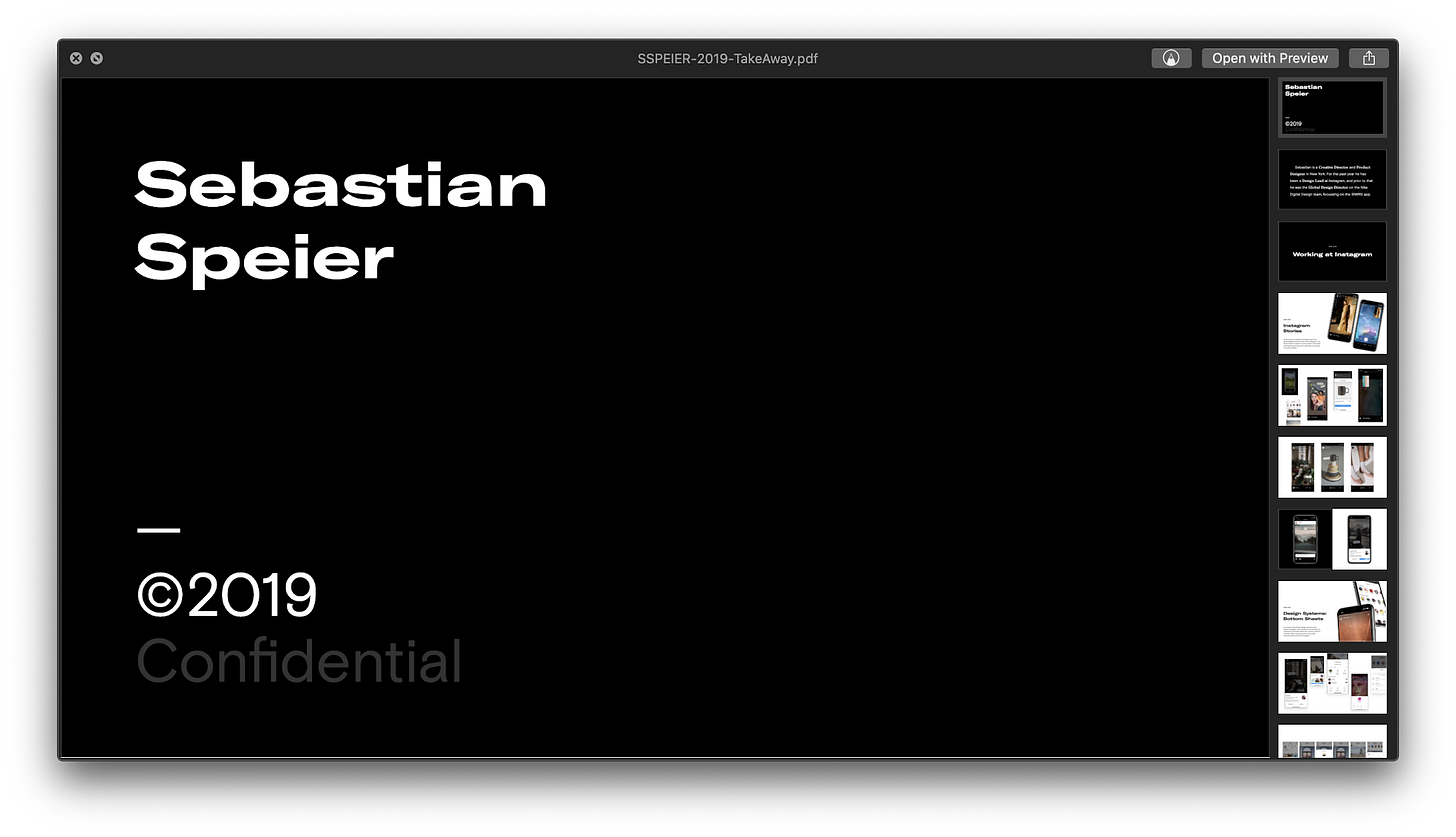The artifacts you need to get hired
On websites, portfolios, and resumes as storytelling tools
Today’s post is a joint-post with my husband Sebastian, drawing from the professional practice course we taught together for designers. If you’re job hunting—you’re in luck! More of these to come, and I’ve added a “career” tab at the top.
When we taught professional practice—whether at Parsons, SVA, or in workshops—we always started with the same question: What do you actually need to get a job as a creative person?
Students would offer the usual suspects: talent, experience, connections. All true, but incomplete. Long before anyone sees your talent or even responds to your email they’re looking at something else entirely: the artifacts that get you in the room in the first place.
This led us to what became a key part of our curriculum: a system of artifacts that work together to tell your story. Sebastian conceived of three core elements: a website, a presentation, and a PDF portfolio. Each serve specific moments in the hiring process. Together, these tools have helped countless students land roles at places like Robinhood, Code and Theory, and startups we’d never heard of.
The three-artifact foundation
Sebastian’s framework breaks down like this:
Your website, your digital calling card
A presentation, your narrative for the room
A PDF portfolio, for follow-up and sharing
As a necessary part of the application process, I’m going to wedge resumes in here.
Your resume, your distilled work experience.
Think of them as different expressions of the same story. Each serves a different audience and moment, but they’re all working toward the same goal: getting someone to want to have a conversation with you.
The website: Your digital calling card
Your website serves as your digital calling card. Sebastian describes his approach: “It gives people a sense of my practice, not so much my sensibilities with regards to process or my case studies.”
The strategy is simple: give people a taste that makes them want more. Sebastian’s site includes a brief bio and carefully selected work samples—no case studies, no deep dives. “If they want to see more about my actual process and work, then they can contact me and I’ll send them a real portfolio.”
We’ve both had many iterations over the years. Sebastian recently refreshed his (sspeier.com), while, I’ve stuck with a Google Doc since 2015. The format matters less than the intention: quickly communicating who you are and how to reach you.

Sebastian’s approach tends toward visual restraint and careful curation. Mine leans into personality and interactivity. Both work because they’re true to how we operate.

The presentation: Your moment to shine
In an interview, you have maybe an hour to tell your story—far more time than someone will spend on your website or email. This is where Sebastian recommends focusing most of your effort.
Sebastian builds his presentations in Keynote with animations, videos, and interactive elements. The structure typically includes: a customized intro (showing this version was tailored for this specific interview), career context, one to two deep case studies, and a “lightning round” of additional work. The goal isn’t to overwhelm but to reveal process, thinking, and impact. What was the brief? What were the constraints? What did you learn? What changed because you were there?
The key advantage is narrative control. Unlike a website where users navigate randomly, a presentation is linear. You control the story they receive.
The PDF portfolio: Your traveling narrative
This is the “take-away artifact”—a condensed version of your presentation designed for sharing after the interview. It gets forwarded, shared, opened between meetings. It needs to work without you there to explain it.
His PDFs maintain visual consistency with the presentation but are streamlined to 20–40 pages. They serve multiple functions: giving hiring managers something to share with stakeholders, providing reference for later discussions, and potentially being forwarded to other opportunities.
The resume: Your proof of work
I’d add one more piece to this system: your resume. While Sebastian’s artifacts focus on showcasing work and process, resumes often determine whether anyone sees that carefully crafted portfolio in the first place. They’re your proof of work—the most reductive expression of your professional identity, but often the first design artifact someone encounters before they click a link, read your email, or know what you’ve made.
Think of resumes as design objects. Not where you show everything, but where you show you know how to choose what to show. When we review them, we’re looking at decisions: What’s emphasized? How is space organized?
The system in practice
What makes this approach powerful is how the pieces work together. Sebastian has used the same presentation format for years, just updating content. (When he’s looking for a new job, last thing he wants is to spend time doing the infrastructure.)
The system is also realistic about how hiring actually works. Your website gets you noticed. Your presentation gets you considered. Your PDF keeps the conversation going after you leave the room. Your resume distills your work experience down to a few bullets.
During my freelance years, my scrappy Google Doc website was the perfect front door for the kind of work I wanted, but when applying for in-house roles, I needed Sebastian’s more structured approach—tailored PDFs and polished presentations paired with carefully crafted resumes.
Beyond the artifacts
These tools are starting points for conversations. They’re designed to get you in the room, demonstrate how you think, and spark curiosity about working with you.
You are not your portfolio. You are not your website. You are not your presentation. You are the conversation that follows.
—Carly & Sebastian
For more on this topic, check out ’s earlier pieces: Applying for a Design Job and Be mindful and get the job you want from 2016—they still hold up.







So sick!
Thanks so much for this helpful and compelling post. I teach undergraduate marketing classes and this is terrific for me to illustrate how to persuasively frame creative work for students entering the job market (i.e., NOT through a resume). Keep up the great work! Cheers, Ian Parkman